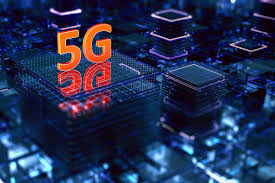Nigeria’s adoption of 5G technology is gradually increasing but remains largely confined to sectors like banking, healthcare, and high-tech industries, while most ordinary Nigerians are still unable to afford or access the high-speed network.
According to the Nigerian Communications Commission (NCC), 5G network penetration reached 2.7 per cent in 2025, up from 1.24 per cent in 2024. Though this growth marks some progress since Nigeria launched 5G services in September 2021, it still reflects a limited impact on the broader market of over 170 million telecom subscribers.
Former telecom CEO and UK-based renewable energy expert Ernest Akinlola said that although 5G adoption appears low on the surface, businesses are actually making strong use of the technology behind the scenes.
“5G adoption may appear low for the mass market, but businesses and corporations are making effective use of the bandwidth,” Akinlola said.
Telecom operators MTN Nigeria, Mafab Communications, and Airtel Nigeria have all launched 5G services between August 2022 and June 2023, focusing on urban centres like Lagos, Abuja, and Port Harcourt where demand and infrastructure support the investment.
For now, banks, financial institutions, tech startups, and medical facilities are the biggest 5G users. In healthcare, the technology is supporting telemedicine, video consultations, and the transmission of large data files, while banks are relying on the speed and bandwidth for faster transactions, open banking platforms, and fintech integrations.
However, the situation is starkly different for the average Nigerian. The high cost of 5G-enabled smartphones and expensive data plans continue to keep the technology out of reach for many. With millions living on less than $2 a day, the affordability gap is preventing mass market adoption.
“For most consumers, 5G would be unaffordable,” Akinlola added. “Telcos are targeting their 5G rollout to achieve the best bang for the buck, focusing on sectors that can justify the investment.”
The latest NCC data confirms the divide in network use. 2G services still account for 40.08 per cent of subscribers, largely in rural areas. 3G adoption is 8.40 per cent, while 4G leads at 48.82 per cent, mostly among urban residents. This indicates that while Nigeria is progressing in connectivity, next-generation internet remains out of reach for most of the population.
Despite efforts by the Central Bank of Nigeria to drive digital financial services through open banking and contactless payments in 2025, the full benefits may not be realised until more people can access 5G.
In healthcare, Nigeria’s shortage of medical personnel makes 5G-based telemedicine particularly important. During MTN Nigeria’s 5G launch, international doctors were able to perform remote diagnoses on Nigerian patients, showcasing the potential for improving access to quality care.
Experts argue that to make 5G accessible to more Nigerians, the government must implement policies to subsidise devices, reduce data costs, and support local production of affordable smartphones.
“We’re seeing a lot of adoption in specialised sectors, which is a positive step,” Akinlola concluded. “But for 5G to truly transform Nigeria, we need strategies to make it accessible to the everyday user.”
